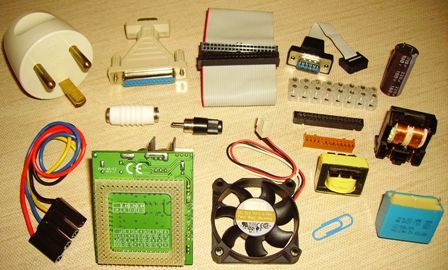Electrical plastics
 Plastics (plastics) unite a group of hard or elastic materials that consist entirely or partially of polymer compounds and are formed into products by methods based on the use of their plastic deformations.
Plastics (plastics) unite a group of hard or elastic materials that consist entirely or partially of polymer compounds and are formed into products by methods based on the use of their plastic deformations.
Plastics are obtained on the basis of various natural and artificial resins, they successfully replace metals, porcelain, rubber, glass, silk, leather and other materials.
They have the following characteristics:
-
relatively high mechanical properties, sufficient for the production of products that are not subjected to significant dynamic loads;
-
good electrical insulating properties, which allows them to be used as dielectrics;
-
high corrosion resistance;
-
high chemical resistance;
-
low hygroscopicity;
-
lightness (the density of plastics is usually 900 ... 1800 kg / m2);
-
wide range of friction coefficients and high wear resistance;
-
good optical properties and transparency.
The main raw material for the production of plastics is cheap and available (refined oil products, natural gas, table salt, lime, sand, etc.).Recycling plastics into products is a relatively simple and inexpensive process.

Electrical plastic products
The composition of plastics includes filler, binder, plasticizers, stabilizers and colorants.
Binders mainly determine the properties of plastic parts and are complex chemical compounds of organic and inorganic origin, which are commonly referred to in the industry as «resins». They are not used in their pure form, because the introduction of additives significantly reduces the price of plastic and significantly affects the physical and mechanical properties of plastic parts.
Natural and synthetic thermoplastic and thermoset resins (polymers), silicon-silicon and fluoro-fluorine polymers and other materials that have the ability to deform under heat and pressure are used as an organic binder. In some cases, inorganic substances (cement, glass, etc.) are also used. The binder content in plastics varies from 30 to 60%.
Auxiliary substances, having the ability to adhere firmly to the binder, give plastics the necessary properties — mechanical strength (wood flour, asbestos), thermal conductivity (ground marble, quartz), dielectric properties (ground mica or quartz), heat resistance (asbestos, fiberglass ).
Plasticizers introduced into plastics to increase plasticity and cold resistance, as well as to prevent products from sticking to the walls of the mold during pressing. Fatty synthetic liquids with a high boiling point (stearin, oleic acid, sulfite cellulose) are used as plasticizers.
Stabilizers contribute to the long-term preservation of their basic properties by plastics.
Colorants give plastics a certain color.
Electrical plastics can be classified according to various properties: application, heat resistance, chemical properties, processing method, binder resins used.
By application, electrical plastics are divided into:
-
for structural (for the production of tool boxes, control knobs and other parts);
-
electrical insulation (for coil frames, panels, boards, etc.);
-
special (magnetodielectrics, conductive, etc.).
According to their chemical properties, plastics are divided into thermoplastic and thermoset.
Thermoplastic plastics (thermoplastics) have the ability to melt under the influence of temperature and pressure, and upon cooling they solidify, taking the required shape. Thermoplastic products can be recycled many times.
Thermosetting plastics soften under the influence of temperature and pressure, and upon further heating they irreversibly pass into an insoluble and insoluble state, retaining the acquired shape. Thermosetting plastics are not recyclable.

